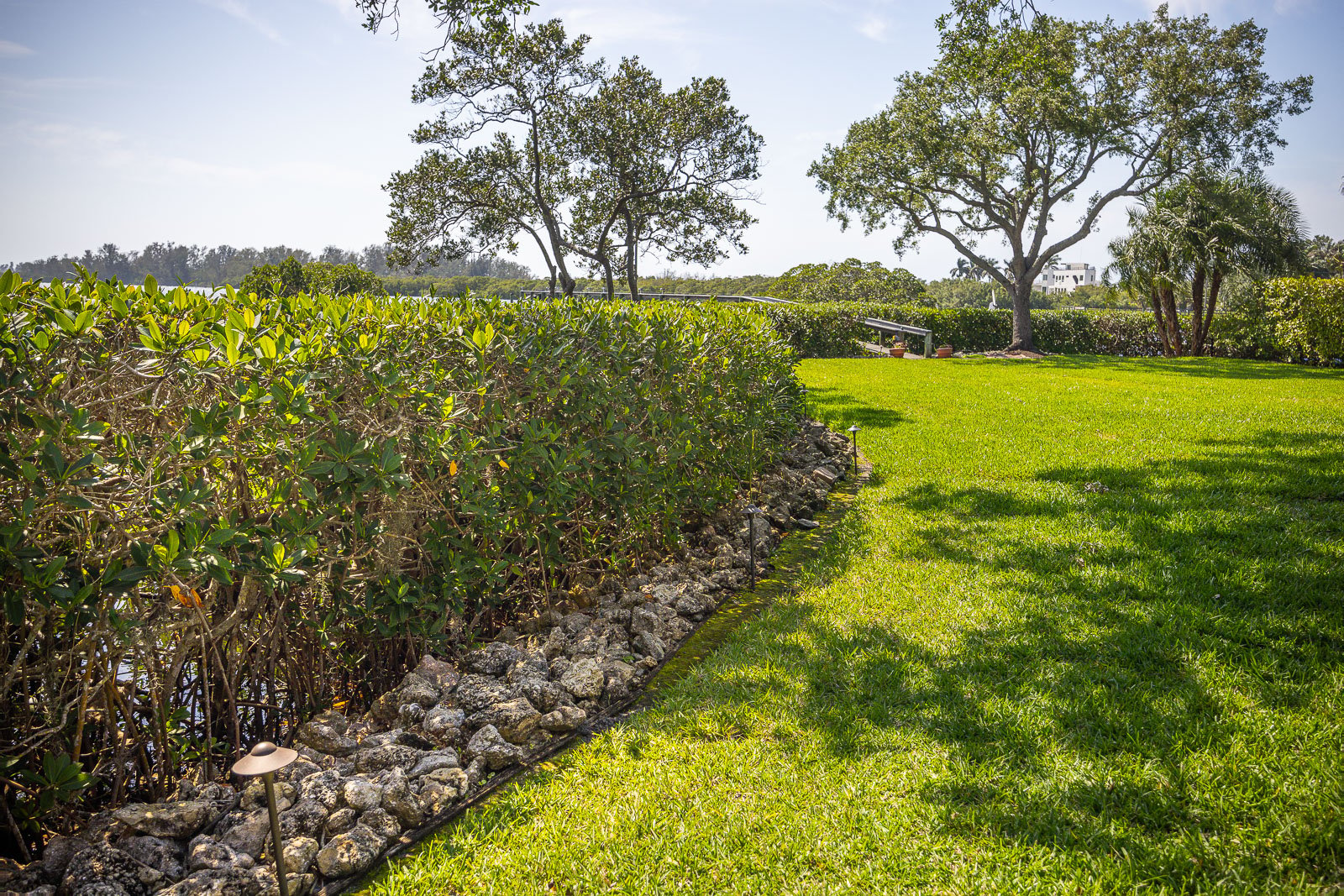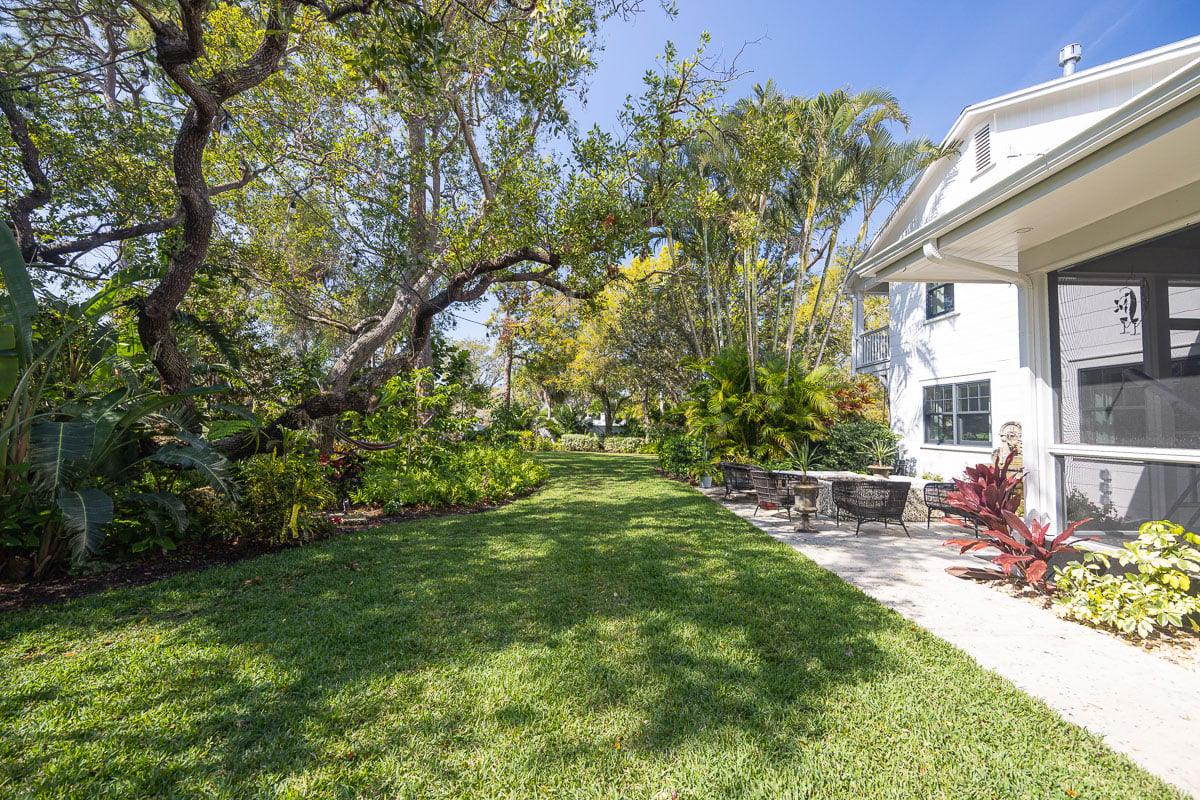
4 Patio Drainage Solutions Every Sarasota Homeowner Should Know
If you’re out on your patio, about to serve your famous bacon-wrapped jalapeño poppers, and a family of ducks paddles past, that’s cute, right?
Except the only water in sight is actually on your patio.
Hmmmm. That’s called a big patio drainage problem.
What are some drainage solutions for your backyard? And how to prevent this problem in the first place? Proper grading. A catch basin. Downspouts. Even better, prevent patio drainage problems in the first place with an expertly installed patio base.
Keep reading to learn more about rainwater drainage solutions, including:
Why Isn’t Your Patio Draining?
Install a Catch Basin
Ensure Good Patio Drainage with Proper Installation
Rainwater Drainage Solutions: Permeable Pavers
Gutter Downspouts for Backyard Drainage Solutions
Why Isn’t Your Patio Draining?
If water is pooling on your patio, it probably wasn’t sloped properly when it was installed. Or it might have sunk and settled if installers didn’t start with a proper base. More on these issues in a bit.
But either way, water pooling on your patio is bad news. And it can happen fast.
It rains so hard and so fast here in Sarasota we might get two inches of rain in 15 minutes. Even the ducks are out there going, “Whoa!”
Excess water can damage your pavers, encourage mosquitoes to breed and can cause landscape flooding and erosion problems.

What to do about it? Let’s take a look at drainage solutions for your backyard:
1. Install a Catch Basin
Catch basins, also called collection boxes, are a great patio drainage solution, and what we use here 90 percent of the time.
It’s basically a 12-inch-square box with a grate on top and a drainage pipe that slopes away from the basin.
Placed in the ground at a low point on your property, or wherever drainage is a problem, they work pretty simply — water and debris enter the box through the grate. Solids settle to the bottom while water drains out of the pipe and is diverted to the street storm drains.
Catch basins are great for beneath downspouts, too, to handle downspout water that doesn't drain away from your foundation. (More about downspouts in a bit.)
2. Ensure Good Patio Drainage with Proper Installation
As we mentioned earlier, that pooling water on your patio could be due to improper installation. What went wrong? Likely one of two problems:
Improper Slope
Pavers should be perfectly level, right? Nope, that’s not the case. Yard drainage specialists make sure paver patios actually pitch to the side a bit, so water can drain.
Yes, the area should look and seem flat and level, but will be installed with just enough slope away from your house for proper drainage.
Tropical Gardens crews establish one inch of slope for every 10 feet to ensure proper patio drainage.

It’s All About That Base
If your paver patio doesn’t have a solid, expertly-installed base, it can sink or hold standing water that doesn’t drain properly. Cue the ducks.
The texture of the crushed concrete base beneath your pavers is perfect for patio drainage and helps lock the pavers into place.
Tropical Gardens yard drainage specialists install four inches of crushed concrete beneath paver patios, unless heavy mowers will have to cross the patio to access the lawn. In that case, they’ll install six inches of base to support the extra weight.
It’s cheaper to use less paver base material, so not all landscaping companies use that much. And if you’re installing your own paver patio, you might be tempted to use less. Resist temptation. If it helps, imagine that family of ducks paddling past.
A quality base underneath helps ensure you’ll avoid patio drainage issues.
A note about compacting that base: it’s important. A hand tamper might work for smaller DIY paver jobs, but pros use a power compactor to really ensure your base is solid.
A plate compactor uses vibration and weight to compact the granular crushed concrete, creating a stable base for your patio with a dense, level surface.
If compacted well, that base is as sturdy as concrete, while allowing proper patio drainage to avoid pooling water.

3. Rainwater Drainage Solutions: Permeable Pavers
Permeable pavers allow rainwater to seep through, rather than pool and flood your patio. They’re designed with wider gaps to let water easily drain through the cracks and soak into the patio base below.
More Florida municipalities are requiring that 50 percent of a property has to be permeable.
Let’s do some quick math. (Sorry.) If your house takes up 45 percent, that only leaves 5 percent for hardscape like driveways and patios. Permeable pavers to the rescue.
Permeable pavers aren’t just smart drainage solutions for your backyard —
they help the environment, too.
Pollutants like chemicals, petroleum products, fertilizers, and other contaminants accumulate on solid surfaces like concrete pavers. Then, when it rains, these pollutants wash off and enter the stormwater system and the environment.
Permeable pavers reduce that stormwater runoff.

4. Gutter Downspouts for Backyard Drainage Solutions
Don’t forget the value of those workhorses called downspouts.
Downspouts collect rainwater from gutters and direct it away from your house and patio. By channeling water away, downspouts prevent water from pooling on the patio.
But make sure those downspouts don’t empty onto your pavers.
Over time that water flow can loosen the sand between pavers, causing them to shift.

What NOT to Use for Rainwater Drainage Solutions
Not every potential patio drainage solution is the best choice. A couple materials Tropical Gardens yard drainage specialists avoid:
Corrugated 4-Inch Pipe
Some installers use corrugated 4-inch pipe for patio drainage solutions like catch basins.
But it’s just not sturdy enough. Stand on it, and it collapses. We won’t use it.
Tropical Gardens crews use the sturdier solid PVC sewer pipe. It’s more expensive than the corrugated stuff, but it will stand up to the job.
Pop-Up Drains
Pop-up emitters are popular as backyard drainage solutions. But not with us.
What are they? When water pressure builds in the drainage system, the cap of the pop-up emitter rises, allowing water to flow out and disperse. Once the water flow slows, the cap closes to prevent debris from entering the system. Its flat profile blends into the surrounding landscape.
But here’s the problem. Here in Sarasota, where St. Augustine grass is the most popular type of lawn, the St. Augustine runners will grow right over pop-up drains. Plus, they’re impossible to clean. Just say no.
Need Sarasota Yard Drainage Specialists? Talk to Us
Nothing against ducks. They have their place. But not paddling on your patio.
Trust your Florida patio — and the rest of your Sarasota landscape design — to us. We’ll help you figure it all out.
Give us a call or fill out our form today! Our team of Sarasota landscape experts will make sure you have a water-free, duck-free patio you’ll love.



